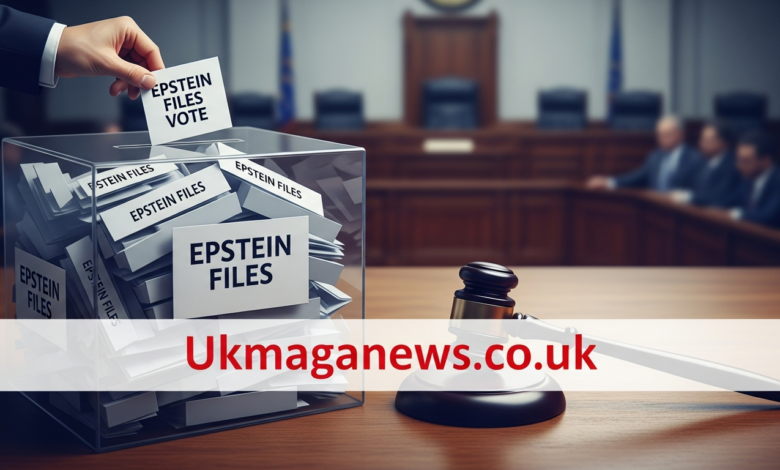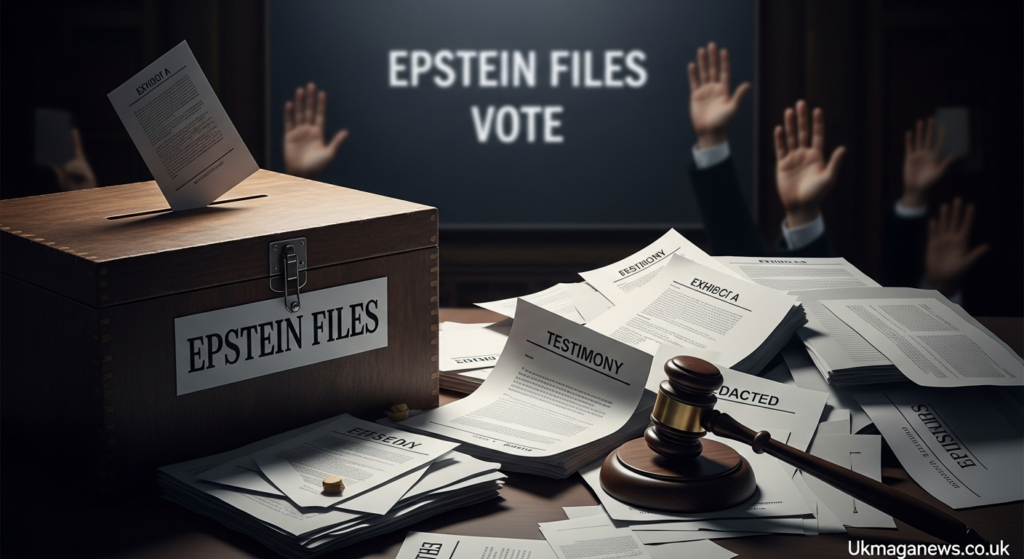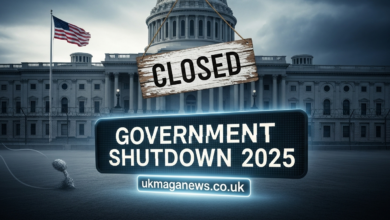Epstein Files Vote: Shocking Truth Behind the Release

Introduction
Few topics have captured public attention quite like the Jeffrey Epstein scandal. The disgraced financier’s network of powerful connections and alleged crimes sparked outrage worldwide. When Congress moved to vote on releasing documents related to Epstein, millions of people wanted answers. The Epstein files vote became a pivotal moment in the push for transparency and accountability.
Understanding what happened with the Epstein files vote requires looking at the broader context of this case. Why did it take so long for documents to be released? What exactly did Congress vote on? Who supported transparency and who opposed it? These questions matter because they reveal how our government handles cases involving powerful people.
This article breaks down everything you need to know about the Epstein files vote. You’ll learn about the timeline of events, what the documents contain, how different lawmakers voted, and why this matters for justice and transparency. We’ll explore the political dynamics, public reaction, and ongoing implications of these revelations. By the end, you’ll have a clear understanding of this complex and important issue.
Background of the Jeffrey Epstein Case
Before diving into the vote itself, you need to understand the broader Epstein scandal. This context explains why the files became such a flashpoint for public anger and demands for accountability.
Jeffrey Epstein was a wealthy financier who cultivated relationships with powerful people across politics, business, and entertainment. He traveled in elite circles and owned properties in Manhattan, Palm Beach, New Mexico, and a private island in the U.S. Virgin Islands. His wealth and connections gave him access to the highest levels of society.
Behind this glamorous facade, prosecutors alleged Epstein ran a sex trafficking operation. He allegedly recruited underage girls and young women, abusing them himself and providing them to other powerful men. Many victims came forward with disturbing accounts of systematic abuse that spanned decades.
Epstein first faced criminal charges in Florida in 2008. However, he received an extraordinarily lenient plea deal that allowed him to avoid federal prosecution. This controversial agreement, negotiated by then U.S. Attorney Alexander Acosta, let Epstein serve just 13 months in county jail with work release privileges. The deal outraged victims and raised serious questions about special treatment for the wealthy.
In 2019, federal prosecutors in New York brought new charges against Epstein for sex trafficking of minors. He was arrested in July 2019 and held without bail. One month later, guards found Epstein dead in his jail cell in what officials ruled a suicide. His death before trial meant many questions would never be answered in court.
What Are the Epstein Files?
The term “Epstein files” refers to various sets of documents related to the case. Understanding what these files contain helps explain why their release became so controversial and why Congress eventually voted on the matter.
Court Documents and Depositions
Many Epstein files come from civil lawsuits filed by victims against Epstein and his associate Ghislaine Maxwell. These documents include depositions, witness statements, and evidence submitted during legal proceedings. They contain names of people who allegedly participated in or witnessed illegal activity.
Some documents were sealed by court order to protect privacy and ongoing investigations. Others remained sealed because powerful people fought to keep their names from becoming public. The tension between transparency and privacy rights created legal battles that lasted years.
Flight logs from Epstein’s private jets also fall under the umbrella of Epstein files. These logs show who traveled on his planes and when. While being on a flight doesn’t prove wrongdoing, the logs help investigators understand Epstein’s network and identify potential witnesses or victims.
Government Investigation Records
Federal agencies including the FBI investigated Epstein for years. Their files contain interview notes, surveillance records, evidence collected, and internal communications. Some of this information relates to ongoing investigations or contains classified intelligence information.
The level of knowledge various government officials had about Epstein’s activities remains a key question. Did authorities ignore warning signs? Did powerful people interfere with investigations? Government files might answer these questions, which is why transparency advocates pushed for their release.
Sealed Grand Jury Materials
Grand jury proceedings regarding Epstein’s original Florida case remain sealed under state law. These records could reveal what prosecutors knew when they negotiated that controversial 2008 plea deal. Victims and their advocates have fought in court to unseal these materials.
Florida law generally keeps grand jury proceedings secret permanently. However, courts can order release in exceptional circumstances. The unique nature of this case and public interest led to ongoing legal efforts to access these records.

The Congressional Push for Transparency
Public pressure eventually forced Congress to address the Epstein files. Understanding how this happened reveals the power of sustained advocacy and media attention on government accountability.
Victims of Epstein’s abuse never stopped demanding justice. They testified before Congress, appeared in media interviews, and pursued civil litigation. Their courage in speaking publicly kept the case in the spotlight even after Epstein’s death. Organizations supporting survivors amplified their voices and organized advocacy campaigns.
Journalists played a crucial role in maintaining attention on the case. Investigative reporting uncovered new information about Epstein’s network, his plea deal, and the people who enabled him. This reporting generated public outrage and created political pressure for action.
Members of Congress from both parties recognized the public’s demand for answers. Some lawmakers had been pushing for transparency since Epstein’s arrest. Others joined the cause as constituent pressure mounted. Bipartisan cooperation on this issue proved rare in an otherwise polarized political environment.
Several factors converged to make Congressional action possible. The 2021 conviction of Ghislaine Maxwell renewed media focus on the case. Victims continued advocating loudly for document release. Public trust in institutions remained low, making transparency initiatives politically popular.
The Epstein Files Vote Explained
When Congress moved forward with votes related to Epstein files, the process unfolded in stages. Understanding what lawmakers actually voted on clarifies what changed and what remained sealed.
What the Vote Actually Covered
Congress voted on measures to encourage or require the release of certain documents related to Epstein. The specific votes varied depending on the chamber and the particular resolution or bill under consideration. Some votes focused on FBI files while others addressed court documents.
One significant vote involved calling on federal agencies to declassify and release information about Epstein’s crimes and anyone who participated in or facilitated them. This type of resolution expresses Congressional will but doesn’t always have binding legal force. It puts public pressure on executive branch agencies to act.
Other legislative efforts aimed to create formal mechanisms for document review and release. These would establish committees or procedures to determine what could be released without compromising ongoing investigations or violating privacy laws. The challenge involved balancing transparency with legitimate security and privacy concerns.
How Lawmakers Voted
The Epstein files vote generally received strong bipartisan support when it came to floor votes. Both Democratic and Republican members recognized the political benefits of supporting transparency. Very few lawmakers wanted to be seen as protecting powerful people potentially connected to Epstein.
However, the path to these votes involved behind the scenes negotiations about specifics. Some members worried about potential innocent people being publicly named based on incomplete information. Others expressed concern about setting precedents for releasing sealed court documents.
Leadership in both parties ultimately allowed votes to proceed because blocking them would have created worse political optics. The overwhelming public support for transparency made opposition politically untenable. Members who might have privately had reservations publicly supported release.
What Changed After the Vote
Congressional votes created political and public pressure but didn’t instantly result in massive document dumps. Federal agencies still control most records and determine what gets released when. Court orders still govern sealed litigation documents.
The votes did accelerate some releases that were already in progress through normal channels. They also gave victims and transparency advocates additional arguments in ongoing court battles. Being able to cite Congressional support for release strengthened legal arguments for unsealing documents.
Some previously redacted information in already public documents became available after the votes. Names of individuals mentioned in depositions or flight logs emerged. However, many of the most sought after documents remained sealed due to ongoing investigations or successful legal challenges by people named in them.
Public Reaction and Media Coverage
The public response to the Epstein files vote and subsequent document releases reveals deep frustration with powerful institutions and demand for accountability.
Social Media Explodes
Whenever new documents dropped or votes occurred, social media platforms erupted with discussion. Hashtags related to Epstein trended regularly on Twitter and other platforms. People shared excerpts from newly released documents, analyzed names mentioned, and demanded further action.
The conversation on social media often outpaced mainstream media coverage. Users compiled information from various sources, created timelines, and connected dots between different documents. This crowdsourced analysis sometimes led to important discoveries that traditional journalists then verified and reported.
However, social media discussion also included significant misinformation. Fake documents circulated alongside real ones. People misinterpreted redacted information or drew unwarranted conclusions. The challenge of separating fact from speculation became increasingly difficult as information flowed rapidly.
Mainstream Media Coverage
Major news outlets provided extensive coverage of the Epstein files vote and releases. Investigative teams analyzed documents, interviewed victims and lawyers, and provided context for new revelations. This coverage kept the story in the public eye and maintained pressure for continued transparency.
Different media outlets approached the story from different angles. Some focused on specific powerful individuals named in documents. Others examined systemic failures that allowed abuse to continue. Still others centered victim stories and the impact on survivors.
The volume of documents and complexity of legal issues sometimes overwhelmed media capacity. Not every release received equal attention. Some potentially important information got lost in the flood of material or didn’t align with existing narratives that journalists were following.
Impact on Public Trust
The Epstein case and the fight for file releases significantly damaged public trust in institutions. The original lenient plea deal, questions about how Epstein died in custody, and the slow pace of transparency all fed cynicism about justice for powerful people.
Polling consistently showed that large majorities of Americans wanted full transparency about Epstein’s network. This crossed political, demographic, and geographic lines. The rare consensus reflected widespread belief that wealthy and connected individuals receive preferential treatment.
The gap between what the public wanted (full immediate release of everything) and what actually happened (gradual partial releases with heavy redactions) frustrated many people. This frustration reinforced existing beliefs that the system protects elites at the expense of ordinary people and victims.
What the Released Documents Revealed
As documents gradually became public through various channels, they painted a disturbing picture of Epstein’s operation and the powerful people in his orbit.
Network of Connections
Released documents confirmed that Epstein maintained relationships with numerous prominent figures. Flight logs showed former presidents, tech billionaires, celebrities, and foreign dignitaries traveled on his planes. Being on these flights doesn’t prove criminal activity, but it shows the breadth of his network.
Depositions and witness statements named individuals who visited Epstein’s properties. Some people acknowledged knowing Epstein but denied any knowledge of illegal activity. Others claimed they cut ties once they learned of his behavior. The documents don’t always resolve questions about who knew what and when.
The documents also revealed how Epstein used philanthropy, academic connections, and business relationships to build credibility. He donated to universities, served on boards, and cultivated an image as a legitimate financier. This respectable facade helped him access powerful circles.
Details About Abuse
Released documents contained heartbreaking accounts from victims describing systematic abuse. These statements detailed recruitment methods, locations where abuse occurred, and the manipulation tactics Epstein used. Reading victim impact statements and depositions makes the human cost of this case painfully clear.
The documents showed that abuse occurred over many years across multiple locations. Victims reported similar patterns of recruitment, grooming, and exploitation. The consistency of accounts from different individuals at different times strengthened the credibility of their testimonies.
Some documents revealed how Epstein’s staff and associates facilitated abuse. Details emerged about how employees scheduled “massages,” arranged travel for young women, and maintained systems that enabled ongoing crimes. This evidence supported charges against Ghislaine Maxwell, who was eventually convicted.
System Failures
Perhaps most disturbing, documents revealed multiple points where the system failed to protect victims or hold Epstein accountable earlier. Police reports from the early 2000s showed that authorities had substantial evidence. The lengthy investigation in Florida produced significant findings that somehow resulted in that minimal plea deal.
Documents related to plea negotiations showed victims were kept in the dark about the deal until after it was finalized. This violated the Crime Victims’ Rights Act and led to a federal judge’s ruling that prosecutors acted illegally. However, this determination came years after the fact and couldn’t undo the agreement.
The documents also raised questions about whether Epstein received special treatment because he allegedly had information about other powerful people. While direct evidence of this remains elusive, the unusual nature of his prosecution and the resources devoted to monitoring him suggested he may have been treated differently than typical defendants.
Political Implications of the Vote
The Epstein files vote and surrounding controversy had ripple effects across the political landscape that extended beyond the case itself.
Bipartisan Cooperation
In an era of intense political polarization, the Epstein files issue created rare bipartisan agreement. Politicians from across the spectrum recognized the political wisdom of supporting transparency and appearing to side with victims against powerful elites.
This cooperation, while welcome, also revealed something troubling. It suggested that bipartisan action happens most easily when it involves attacking easy targets rather than addressing structural problems. Supporting document release required no difficult policy choices or trade-offs.
Some observers noted the irony that Congress could unite on symbolic transparency measures while remaining gridlocked on substantive policy issues. The Epstein files vote let politicians look responsive to constituents without actually reforming the justice system or addressing inequality.
Impact on Individual Politicians
Several political figures faced scrutiny because of their past associations with Epstein. Old photos, flight logs, and donation records came under renewed examination. Some politicians issued statements distancing themselves or explaining the context of their interactions.
For those with documented extensive connections to Epstein, the revelations created political problems. Opponents used these associations in campaigns and debates. The mere appearance of connection to Epstein became politically toxic regardless of whether any wrongdoing occurred.
Interestingly, the political impact varied depending on other factors. Some politicians weathered Epstein connections relatively easily while others faced sustained criticism. Party affiliation, existing controversies, and media coverage patterns all influenced who faced serious consequences.
Broader Conversations About Power
The Epstein case catalyzed larger conversations about how power and wealth insulate people from accountability. The obvious disparity between Epstein’s treatment and how the justice system handles ordinary defendants fueled anger about inequality.
Progressive politicians used the case to argue for criminal justice reform and ending different treatment for wealthy defendants. Conservative politicians emphasized moral decay among coastal elites. Despite different frameworks, both sides found the case useful for their broader political narratives.
The case also fed into conspiracy thinking and general distrust of institutions. When the official narrative involved such extraordinary circumstances, from the plea deal to the death in custody, even reasonable skepticism could quickly spiral into unfounded speculation.
Ongoing Legal Battles and Investigations
Despite Congressional votes and partial document releases, many legal battles continue. Understanding these ongoing efforts shows that the story is far from over.
Civil Litigation Continues
Victims have filed numerous civil lawsuits against Epstein’s estate, alleged co-conspirators, and institutions that allegedly enabled abuse. These cases seek financial compensation for survivors and continue to generate new document disclosures through the discovery process.
Some lawsuits target banks that handled Epstein’s accounts, arguing they should have detected and reported suspicious transactions. Others focus on individuals accused of participating in abuse. Each case potentially reveals new information as evidence is collected and depositions conducted.
The Epstein estate has paid out substantial settlements to victims. However, money cannot undo trauma, and many survivors express that accountability and truth matter as much as financial compensation. The civil cases provide one of the few remaining avenues for forcing disclosure.
Criminal Investigations
While Epstein can no longer face prosecution, investigations into potential co-conspirators continue. The conviction of Ghislaine Maxwell was a significant step, but prosecutors have indicated that others might face charges if evidence supports them.
The challenge involves proving specific crimes with admissible evidence. Having someone’s name in documents doesn’t constitute sufficient evidence for criminal charges. Prosecutors need witness testimony, physical evidence, and documentation that proves criminal conduct beyond reasonable doubt.
Some investigations remain active but proceed slowly. Building cases against wealthy defendants with extensive legal resources takes time. The passage of years since alleged crimes occurred also creates challenges with witness memories and statute of limitations issues.
Fights Over Sealed Records
Legal battles over sealed court documents continue in multiple jurisdictions. Media organizations, victims’ rights groups, and transparency advocates have filed motions to unseal records. These requests face opposition from people named in documents who argue release would violate their privacy rights.
Courts must balance competing interests when deciding these motions. Public interest in transparency is weighed against privacy rights of people who may be innocent but mentioned in documents. The legal standard for unsealing varies depending on jurisdiction and the type of records involved.
Each court decision on unsealing potentially reveals new information. As judges rule on specific motions, previously redacted portions of documents sometimes become public. This creates a slow drip of new revelations rather than a single comprehensive disclosure.
Why Complete Transparency Remains Difficult
Many people wonder why, after Congressional votes and years of public pressure, complete transparency still hasn’t happened. Several legitimate and controversial factors explain the ongoing delays and redactions.
Protecting Ongoing Investigations
Law enforcement agencies argue that releasing certain information could compromise active investigations. Revealing investigative techniques, confidential sources, or evidence not yet presented in court might tip off potential defendants or taint jury pools.
This explanation frustrates transparency advocates who wonder how many years investigators need. Some suspect ongoing investigation claims sometimes serve as convenient excuses to avoid disclosure. However, complex cases involving multiple jurisdictions and international elements genuinely can take years to develop.
Privacy Rights and Innocent People
Many individuals mentioned in Epstein related documents maintain they did nothing wrong. Some were victims themselves. Others had legitimate business or social interactions with Epstein without any knowledge of criminal activity. These people argue that releasing documents that mention them unfairly damages their reputations.
Courts take these privacy concerns seriously, particularly for people never charged with crimes. The legal system generally protects individuals from having unproven allegations made public through court records. Balancing this protection with transparency about a matter of significant public interest creates genuine legal dilemmas.
Classification and National Security
Some documents potentially intersect with classified intelligence. If Epstein or his associates had connections to foreign intelligence services, as some have speculated, related documents might contain classified information. National security agencies can block release of such material.
The extent to which national security truly justifies withholding information versus serving as a catch-all excuse remains debatable. Intelligence agency classification decisions receive minimal oversight and can be overly broad. However, genuine national security concerns sometimes do justify secrecy.
Institutional Self Protection
Perhaps the most controversial explanation for limited transparency involves institutions protecting themselves and powerful individuals. The system worked so poorly in the Epstein case that full disclosure might reveal incompetence or corruption that would damage institutions and careers.
This cynical explanation resonates with many Americans who already distrust government and justice systems. Whether conscious cover-up or institutional inertia, the result is the same: incomplete information that leaves questions unanswered. The gap between stated reasons for secrecy and public skepticism about those reasons remains wide.
What You Can Do to Support Transparency
If you care about accountability and transparency in the Epstein case, you’re not powerless. Individual actions and collective pressure can make a difference.
Contact Your Representatives
Let your Congressional representatives know you support maximum transparency in the Epstein case. Specific communications from constituents influence legislative priorities. Generic form letters matter less than personal messages explaining why this issue matters to you.
When new information emerges or legal battles reach critical points, timely contact with lawmakers can affect their actions. Politicians respond to constituent pressure, especially when many people raise the same concern. Your voice contributes to creating that pressure.
Support Victims’ Rights Organizations
Organizations working on behalf of Epstein victims continue fighting for justice and transparency. These groups provide legal support, advocate for policy changes, and keep pressure on institutions. Your donations help fund their work.
Beyond financial support, amplifying these organizations’ messages on social media increases their reach. Following their updates keeps you informed about developments and opportunities to take action. They often issue calls to action when public pressure could influence specific decisions.
Stay Informed and Share Accurate Information
Following credible journalists and news organizations covering the case helps you stay informed. When new documents are released or court decisions issued, understanding what actually happened rather than relying on social media speculation is important.
Sharing accurate information with your networks helps counter misinformation. When you see false claims circulating, providing corrections with links to reliable sources serves the cause of truth. Distinguishing between verified facts and speculation in your own sharing demonstrates intellectual honesty.
Participate in the Conversation Thoughtfully
The Epstein case generates strong emotions and wild theories. Participating in discussions while maintaining standards of evidence and fairness actually strengthens the cause of accountability. Avoiding conspiracy theories and unproven allegations makes legitimate concerns harder to dismiss.
When powerful people are credibly implicated, holding them accountable is essential. When people are simply mentioned in documents without evidence of wrongdoing, acknowledging ambiguity protects against false accusations. This balance between seeking truth and avoiding witch hunts serves justice better than extreme approaches.

Conclusion
The Epstein files vote represented an important moment in the ongoing fight for transparency and accountability. While Congressional action didn’t instantly produce complete disclosure, it increased pressure on institutions and accelerated some releases. Understanding what happened, what’s been revealed, and what battles continue helps you engage with this issue meaningfully.
The case remains unresolved in many ways. Questions about co-conspirators, system failures, and the full extent of Epstein’s network persist. Victims continue seeking justice through civil litigation and advocacy. Legal battles over sealed documents proceed slowly through courts. The story isn’t over.
Your engagement matters. Public pressure created the conditions that led to the Epstein files vote and subsequent releases. Continued attention ensures that institutions can’t simply wait for interest to fade before quietly closing files. Supporting transparency, victims’ rights, and accountability sends a message that Americans won’t accept special treatment for powerful people.
What actions will you take to support transparency in this case? Will you contact representatives, support victims’ organizations, or simply commit to staying informed? Share this article with others who care about accountability and join the ongoing conversation demanding answers.
Frequently Asked Questions
What was the Epstein files vote?
The Epstein files vote refers to Congressional actions calling for the release of documents related to Jeffrey Epstein’s crimes and network. Various resolutions and bills encouraged federal agencies to declassify information about Epstein and anyone who participated in or enabled his crimes. These votes received strong bipartisan support but didn’t immediately result in complete document disclosure.
Who voted against releasing the Epstein files?
Most Congressional votes on Epstein related transparency measures passed with overwhelming bipartisan support. Very few lawmakers voted against these measures as opposition would have been politically difficult. The votes typically received near unanimous support once they reached the floor because blocking transparency looked like protecting powerful people potentially connected to Epstein.
What information did the Epstein files contain?
The Epstein files include court documents from civil lawsuits, depositions, witness statements, flight logs showing who traveled on his planes, FBI investigation records, and sealed grand jury materials. Released portions reveal details about Epstein’s network of powerful connections, victim accounts of systematic abuse, and system failures that allowed crimes to continue for years.
Has everything about Epstein been released?
No, many documents remain sealed or heavily redacted. Ongoing criminal investigations, privacy rights of innocent people mentioned in documents, classified intelligence information, and various legal battles keep significant information from public view. The release process continues gradually through court orders and agency decisions rather than comprehensive disclosure.
Why did it take so long to release Epstein documents?
Multiple factors delayed releases including legal protections for sealed court records, ongoing investigations that could be compromised, privacy rights of people mentioned who weren’t charged with crimes, and classification of some materials. Institutional reluctance to expose system failures and powerful people also contributed. Legal battles over each set of documents must proceed through courts.
Who was named in the released Epstein files?
Flight logs and depositions mentioned numerous prominent figures including former presidents, tech billionaires, celebrities, academics, and foreign dignitaries. Being named in documents doesn’t prove wrongdoing as many people had legitimate interactions with Epstein without knowing about criminal activity. Some names remain redacted to protect privacy or ongoing investigations.
Can I read the Epstein files myself?
Many released documents are available through court websites, media organization publications, and government transparency portals. However, documents are often heavily redacted and scattered across multiple sources. Some remain sealed or restricted. Media organizations have compiled and analyzed available documents to make them more accessible to the public.
What happened to people named in the Epstein files?
Consequences varied significantly. Ghislaine Maxwell was convicted and imprisoned for facilitating Epstein’s crimes. Some people faced reputational damage and political problems. Others issued statements explaining their connections and faced minimal consequences. Many investigations remain ongoing. Being named in documents hasn’t automatically led to criminal charges without specific evidence of wrongdoing.
Will there be more releases of Epstein documents?
Yes, ongoing legal battles will likely produce additional releases over time. Civil lawsuits continue generating documents through discovery. Courts periodically rule on motions to unseal records. Federal agencies gradually declassify materials. However, complete disclosure of everything remains unlikely due to various legal protections and ongoing investigations.
How did the Epstein files vote change things?
The Congressional votes increased political and public pressure on institutions to release information. They gave victims and transparency advocates additional arguments in court battles over sealed documents. Some previously redacted information became available after the votes. However, the votes didn’t have binding legal force to instantly compel comprehensive disclosure from all agencies and courts.
Also Read Ukmaganews.co.uk



